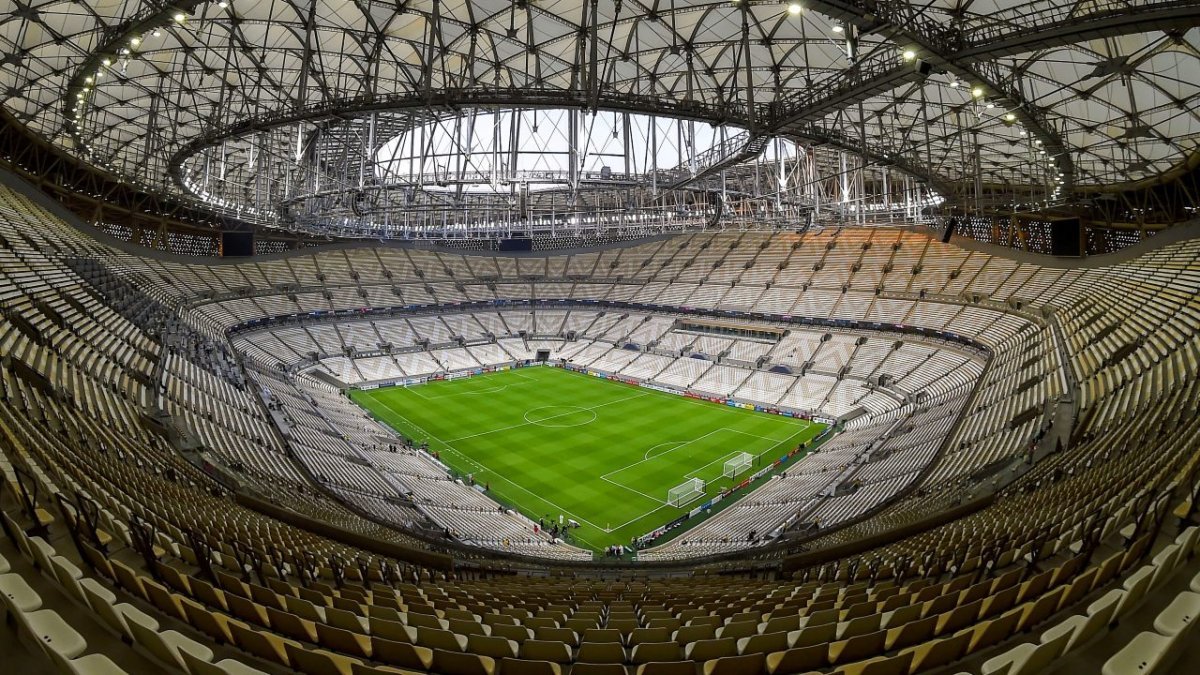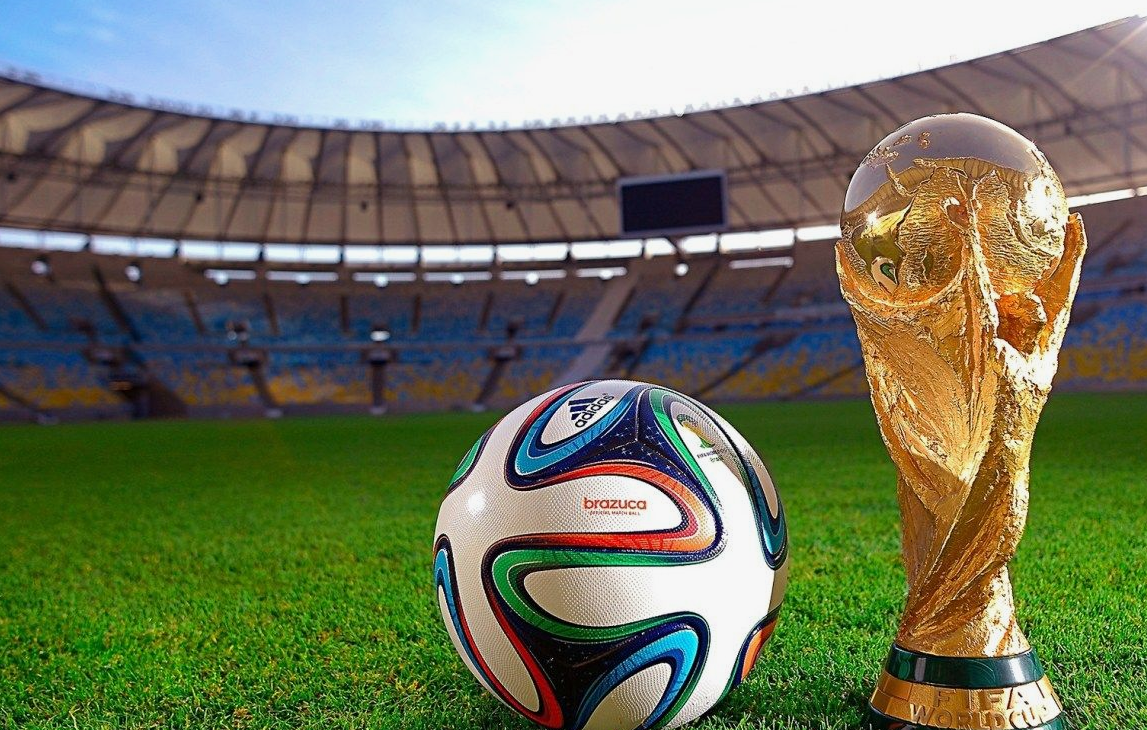A FIFA soccer field is 100-110 meters long and 64-75 meters wide. The dimensions may vary slightly. A FIFA soccer field typically measures between 100 to 110 meters in length and 64 to 75 meters in width. These dimensions provide a standard playing area for FIFA-sanctioned matches, ensuring consistency and fairness across different venues. Understanding the size of a FIFA soccer field is crucial for players, coaches, and fans alike, as it impacts game strategies, player positioning, and overall match dynamics.
The field’s dimensions play a significant role in shaping the flow and intensity of the game, highlighting the importance of adhering to FIFA regulations for a consistent and competitive playing experience.
How Big Is a FIFA Soccer Field

History of Fifa Soccer Field
Soccer has a rich history, and the FIFA soccer field has evolved to meet the needs of the sport. Understanding the origins and evolution of the FIFA soccer field helps in appreciating its current dimensions and layout.
Origins of Fifa Soccer Field- How Big is a FIFA Soccer Field
The origins of the FIFA soccer field can be traced back to the establishment of the first set of rules for the game in the mid-19th century. At that time, the size of the soccer field was not standardized, leading to variations in dimensions from one match to another. However, as the sport gained popularity, the need for consistent dimensions became evident.
Evolution of Fifa Soccer Field- How Big is a FIFA Soccer Field
Over the years, FIFA has played a significant role in standardizing the size of soccer fields. The evolution of the FIFA soccer field has been influenced by the need for uniformity in dimensions to ensure fair play and promote the development of the sport worldwide. As a result, FIFA has established specific guidelines for the size of soccer fields, which are now adhered to by professional and amateur leagues globally.
Dimensions of Fifa Soccer Field
When it comes to FIFA soccer fields, the dimensions play a crucial role in the overall gameplay. Understanding the standard measurements and variations in field size is essential for players, coaches, and fans alike.
Standard Measurements
The standard measurements of a FIFA soccer field are defined by the governing body, ensuring consistency and fairness across all official matches. According to FIFA regulations, the length of the field ranges from 100 to 110 meters (110 to 120 yards), while the width falls between 64 to 75 meters (70 to 82 yards).
Variations In Field Size
Despite the standard measurements set by FIFA, variations in field size can occur based on specific circumstances or regulations of different leagues and competitions. For instance, some stadiums may have slightly different dimensions due to space constraints or historical reasons. However, it’s important to note that such variations should still adhere to FIFA’s guidelines to maintain the integrity of the game.
Components of Fifa Soccer Field
The FIFA soccer field consists of various essential components that contribute to the game’s structure and regulations. Understanding these components is crucial for players, coaches, and fans to grasp the dynamics of the game.
Goalposts and Nets
The goalposts and nets are fundamental elements of a FIFA soccer field, defining the area where players aim to score goals. The standard dimensions of the goalposts and nets play a significant role in shaping the game’s outcome.
Corner Flags And Lines
Corner flags and lines are essential markings on a FIFA soccer field that designate specific areas for corner kicks. These visual indicators help players navigate the field effectively and adhere to the game’s rules.
Playing Surface of Fifa Soccer Field
The playing surface of a FIFA soccer field measures 100-110 meters in length and 64-75 meters in width, meeting FIFA’s official dimensions. These specifications ensure standardized dimensions for soccer fields across the world, allowing for consistent gameplay and fair competition.
Natural Grass Fields
When it comes to FIFA soccer fields, natural grass fields are the most common playing surface. The official dimensions of a FIFA soccer field require the playing surface to be rectangular and between 100-130 yards long and 50-100 yards wide. The field is marked with lines to indicate the boundaries, center circle, penalty area, and goal area. The natural grass surface must be well-maintained, with a consistent length and thickness to ensure a level playing field for the players.
Artificial Turf Fields
In addition to natural grass fields, artificial turf fields are also used for FIFA soccer games. These fields are made of synthetic fibers and are designed to mimic the look and feel of natural grass. The dimensions of the field remain the same as natural grass fields, but the surface is typically more uniform and consistent. The synthetic fibers are designed to withstand wear and tear, making them a popular choice for high-traffic soccer fields.
In conclusion, whether a FIFA soccer field is made of natural grass or artificial turf, the playing surface must adhere to strict dimensions and standards to ensure a fair and competitive game. The field must be well-maintained and consistent, providing a level playing field for all players.

Regulations and Guidelines
Regulations and Guidelines play a crucial role in maintaining the standard and quality of FIFA soccer fields. Adhering to the FIFA Regulations and Maintenance Guidelines is essential to ensure that the football field size in square meters and 11 a-side football pitch size in meters meet the required standards.
Fifa Regulations
When it comes to FIFA regulations, the dimensions of a soccer field must comply with the guidelines set by FIFA. The standard dimensions for a FIFA soccer field range between 100-110 meters in length and 64-75 meters in width, with a recommended football field size in square meters of 7,140 to 8,250 square meters. The penalty area should measure 16.5 meters in length and 40.3 meters in width.
Maintenance Guidelines
Maintaining a FIFA soccer field involves adhering to specific guidelines to ensure the pitch remains in optimal condition. This includes regular mowing to keep the grass at the recommended height of 30-32 millimeters, adequate irrigation to maintain the quality of the playing surface, and proper marking of the field boundaries and lines to meet the 11-a-side football pitch size in meters standards.
Significance of Field Size
The size of a FIFA soccer field holds immense significance in the game of soccer, impacting gameplay and aligning with international standards. Understanding the impact of field size helps in comprehending the dynamics and strategies involved in the sport.
Impact on Gameplay
The dimensions of the soccer field directly influence the style of play and tactics employed by teams. A larger field encourages expansive and possession-based play, while a smaller field promotes a more compact and defensive approach. The size of the field also affects the speed of the game, as larger fields tend to lead to a faster-paced match with more running and technical skill, whereas smaller fields often result in a more physical and direct style of play.
International Standards
FIFA has established specific guidelines for the dimensions of a soccer field, ensuring uniformity and fairness across international competitions. The standard length of a FIFA soccer field ranges from 100 to 130 yards, with a width of 50 to 100 yards. These regulations are crucial in maintaining consistency and providing a level playing field for teams from diverse regions and playing styles.
Notable Fifa Soccer Fields
FIFA soccer fields have specific dimensions, measuring 100-110 meters in length and 64-75 meters in width. The penalty area extends 16. 5 meters from the goal line and is 40. 3 meters wide. The goal area is 6 meters by 18 meters, providing ample space for players to showcase their skills.
Football, or soccer as it is known in some parts of the world, is the most popular sport globally. It is played on a rectangular-shaped field, with the size of the field varying depending on the level of play. From pro soccer field dimensions to high school soccer field dimensions and youth soccer field dimensions, each level has its specific field size. FIFA, the international governing body of soccer, has specific regulations on field dimensions for international matches. In this blog post, we will focus on notable FIFA soccer fields and their dimensions.
Iconic Stadiums
Some of the world’s most famous stadiums have hosted FIFA World Cup matches. The Maracanã Stadium in Rio de Janeiro, Brazil, hosted the final of the 1950 World Cup and has a seating capacity of over 78,000. Its field dimensions are 110m x 75m, which is within the FIFA regulations for international matches. Another iconic stadium is Wembley Stadium in London, England. It has a seating capacity of 90,000 and a field size of 105m x 68m.
Historical Fields
The Azteca Stadium in Mexico City, Mexico, is the only stadium to have hosted two World Cup finals, in 1970 and 1986. Its seating capacity is over 87,000, and the field dimensions are 105m x 70m. Another historical field is the Estadio Centenario in Montevideo, Uruguay, which hosted the first World Cup final in 1930. Its field dimensions are 105m x 70m, which is the same as the Azteca Stadium.
In conclusion, FIFA soccer fields can vary in size depending on the level of play. Notable FIFA soccer fields include iconic stadiums such as the Maracanã Stadium and Wembley Stadium and historical fields such as the Azteca Stadium and Estadio Centenario. Understanding the dimensions of these fields is crucial for players, coaches, and fans alike.

Future Trends In Field Design
The future of soccer field design is moving towards innovative technologies and sustainability efforts. These trends aim to enhance player performance, reduce environmental impact, and improve overall field quality.
Technological Innovations
1. Smart Turf: Incorporating sensors into the turf to monitor player movements and provide real-time data for analysis.
2. Virtual Reality Training: Implementing VR technology for immersive training sessions and strategic gameplay simulations.
Sustainability Efforts
- 1. Eco-Friendly Materials: Using recycled materials for field construction to reduce waste and carbon footprint.
- 2. Water Conservation: Installing irrigation systems that optimize water usage and minimize water wastage.
Conclusion
Understanding the dimensions of a FIFA soccer field is essential for players and fans. The size impacts gameplay strategy and overall experience on the field. Knowing the official measurements can provide insight into the sport’s dynamic nature and professional standards. Explore further for a deeper appreciation of soccer fields.




